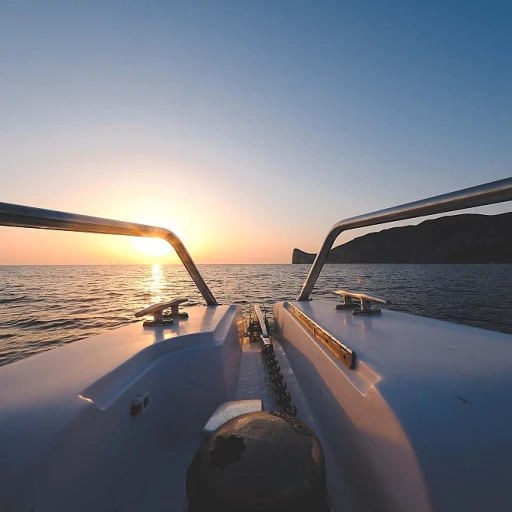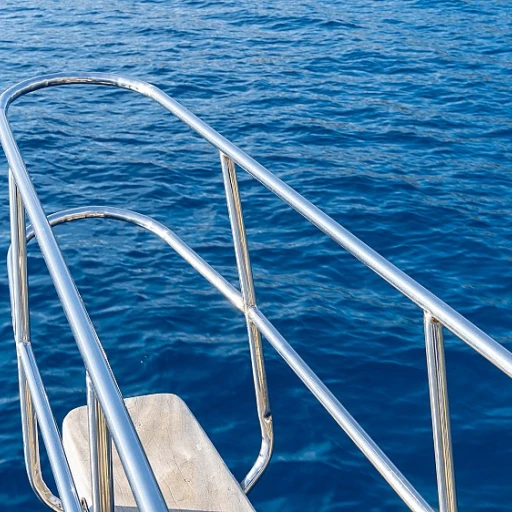
Understanding the basics: types of yachts and their costs
Different yacht types: an overview
When pondering how much is a yacht, it's crucial to start with the basics: understanding the diverse types available. The world of yachts spans a wide spectrum, from the modestly sized small yachts to opulent luxury motor yachts.
Sailing yachts are a popular option, characterized by their reliance on the wind as a primary mode of propulsion. They can range from around $100,000 for smaller models to over $10 million for larger, more luxurious options.
In contrast, motor yachts are powered by engines and often come with higher price tags due to their amenities and technological advancements. For instance, an average 80-foot motor yacht can cost between $1.5 million and $5 million, with top-tier models reaching $15 million or more. According to a report by Boat International, the global average price for newly built motor yachts in the 24-30 meter range is about $8 million.
Then there are catamarans, famous for their stability and spaciousness. Prices here can range significantly, with smaller catamarans costing around $300,000, while luxury models can skyrocket to several million dollars.
Factors influencing yacht costs
Several elements contribute to the overall price of a yacht. The size and type of the yacht are primary factors, but the costs don't stop there. The year of manufacture, builder's reputation, and the materials used can significantly impact price. For example, yachts constructed by renowned builders like Benetti or Delta Marine often command higher prices due to their superior craftsmanship and brand recognition.
Additionally, the number of crew members required, the yacht's interior design, and the inclusion of advanced technology or luxurious amenities further contribute to the final price. A study by Yacht Lifestyle highlights the necessity of understanding these hidden expenses when calculating overall yacht costs.
Average costs across different yacht categories
On average, small yachts (20-30 feet) are the most affordable, typically priced between $50,000 to $1 million. Mid-sized yachts (50-60 feet) average around $1 million to $5 million, while large luxury yachts (80 feet and above) can exceed $10 million.
It's also important to note the impact of fluctuating market trends on yacht prices. For instance, a boom in yacht sales during the COVID-19 pandemic led to increased prices due to heightened demand and limited supply. However, industry experts like Frank Grzeszczak Sr. from IYC anticipate a market correction as production returns to normal.
Size matters: how yacht size affects price
Understanding the role of yacht size in pricing
Bigger isn't always better: the size-cost relationship
Yachts come in various sizes, and the general assumption is that a larger yacht would naturally cost more. While this is true to some extent, it's not the only factor that determines price. For example, a 2023 study by BOATING International found that maintenance costs increase by 35% for every 10 feet added to a yacht's length. Besides maintenance, dockage, storage, and crew size all contribute significantly to the overall cost.
Unveiling the impact of length: feet matter
The length of a yacht makes a big difference in both purchase and chartering costs. According to James Bourne, a yacht broker with over 20 years of experience, each additional foot can add between $10,000 to $20,000 to the purchase price of a new yacht. The same applies for charters; a 76-feet luxury yacht's charter fee can double compared to a 60-feet yacht for the high season in the Mediterranean.
Maintenance and operational costs skyrocket with size
Larger yachts mean larger engines, more complex systems, and a bigger crew. This results in higher fuel costs, increased maintenance, and more significant operational challenges. A report by SuperYacht Times noted that operational costs for yachts above 100 feet can easily exceed $1 million per year, largely driven by fuel and crew wages.
Who's onboard matters
Don't forget that with a larger yacht, you'll need more crew. A 80-feet yacht might have a crew of 3-4, while a 150-feet motor yacht could have 8-12 crew members. The average salary for a professional yacht crew member is around $4,000 a month, according to Crewfinders International. That’s a considerable expense when you multiply it by several crew members.
Case studies: comparing a small yacht and a luxury motor yacht
Let's compare a small 50-feet sailing yacht with a 150-feet luxury motor yacht. The initial purchase price for a 50-feet sailing yacht could be around $1 million, whereas a 150-feet luxury motor yacht could cost you upwards of $15 million, based on data from industry sales reports in 2022. Operational costs for the sailing yacht might be $100,000 annually compared to $1.5 million for the larger motor yacht. It's a significant difference that highlights the impact of size on both purchase and ongoing costs.
Water toys and amenities: the extras that add up
If you're considering adding water toys like jet skis, tenders, or even submarines, these costs will also scale with the yacht's size. A small yacht might carry a couple of jet skis costing around $10,000 each, while a larger yacht could have a fleet of water toys totaling $500,000. Each extra amenity not only costs more initially but also adds to maintenance and operational expenses.
A breakdown of yacht ownership costs
Initial purchase price
The first and most obvious cost associated with owning a yacht is the purchase price. Yachts can vary anywhere from a few thousand dollars for a modestly-sized sailboat to over $500 million for a top-of-the-line luxury motor yacht. For instance, Jeff Bezos' superyacht, the Koru, reportedly costs around $500 million. According to Boat International, the average price of a 100-foot motor yacht is around $10-15 million.
Maintenance and repairs
Taking care of a yacht isn’t just about washing it down occasionally. Regular maintenance and unexpected repairs can add significantly to the overall cost of yacht ownership. According to a report from YachtLife, annual maintenance costs can run 10% of the yacht's purchase price. For a $10 million yacht, that’s potentially $1 million per year on maintenance alone! And that's not even considering unexpected repairs which can run into the tens or hundreds of thousands.
Crew salaries
Yachts typically require a crew to operate smoothly. Depending on the yacht's size, the crew might include a captain, engineers, deckhands, stewards, chefs, and more. Salaries also vary widely based on the crew's experience, the yacht's size, and its operational region. For a 100-foot motor yacht, the Dockwalk Salary Survey indicates that the annual salary for a captain alone can range from $80,000 to $180,000. Overall, running a full crew for such a yacht could easily cost $750,000 annually.
Dockage and storage fees
Where you dock your yacht can significantly impact your annual costs. Premium locations such as Monaco or St. Tropez can command dockage fees running into the hundreds of thousands per year. Seasonal variations also play a role, with fees generally higher during popular seasons. For example, docking a yacht in the Mediterranean during summer can cost up to $4,000 per night. Alternatively, some yacht owners opt for cheaper annual or semi-annual arrangements in less glamorous but equally functional marinas.
Insurance
Insuring a yacht isn't cheap but it's a necessity. Policies usually cover accidents, theft, and even third-party liabilities. The costs depend on factors like the yacht's value, cruising regions, and intended use. On average, insurance premiums are 1.5% to 2% of the yacht's value per year. Therefore, for a $10 million yacht, that’s an annual insurance bill between $150,000 and $200,000.
Fuel costs
Yachts are known for their fuel-consuming nature, especially motor yachts. According to SuperYacht Times, the average fuel consumption for a 100-foot motor yacht can be around 200 gallons per hour while cruising. With diesel prices averaging about $3 per gallon, a 24-hour cruising period could cost around $14,400. Annually, depending on usage, fuel costs alone can run into hundreds of thousands.
Depreciation
Like any other vehicle, yachts depreciate in value over time. On average, a new yacht can lose 10% to 20% of its value per year. This depreciation affects not only its resale value but also impacts insurance premiums and loan repayments. Understanding depreciation is crucial for prospective yacht owners considering long-term charters as an alternative to outright purchasing.
Yacht chartering: expenses and what to expect
Yacht rental fee structures: understanding the nitty-gritty
If you're considering chartering a yacht, getting a grip on the fee structures is essential. The base charter rate usually covers the rental cost but doesn't always include everything. You might see prices start from $10,000 for a small yacht up to $500,000 per week for luxury yachts over 100 feet during peak season. These rates vary based on the yacht's size, type, and location. For instance, a motor yacht will generally cost more to charter than a sailing yacht of similar size due to higher fuel and maintenance costs.
Additional expenses: what's not included in the charter fee
While the base rate might cover crew wages, bear in mind the additional costs you'll incur. The APA (Advance Provisioning Allowance) is typically 20-30% of the base rate, and it covers fuel, food, beverages, port fees, and other expenses. To illustrate, if your base charter rate is $50,000, you could be looking at an APA of $10,000 to $15,000. Special occasions or destinations like the Caribbean or the Mediterranean may demand higher APAs, so it's wise to adjust your budget accordingly.
Gratuities and taxes: tipping and VAT
It's customary to tip the crew at the end of your yacht charter. While the amount can vary, industry norms suggest 10-20% of the base charter fee. This gratuity ensures your crew is recognized for their hard work. Meanwhile, don't forget about VAT, which varies by location. For example, in Italy, you might be hit with a 22% VAT, while the rate is considerably lower in places like Monaco or the U.S.
Examples of charter costs in top cruising destinations
Let’s take a look at some popular destinations and their respective costs. In the Bahamas, chartering a 100-foot luxury yacht could run you about $150,000 per week. Meanwhile, the Greek Islands might present a more cost-effective option with rates around $70,000 per week for a similarly sized yacht. Season also plays a crucial role – charters in Croatia during the summertime fetch higher prices compared to the off-season.
Choosing the right type of yacht for your needs
Your choice of yacht significantly impacts your overall cost. Motor yachts are preferred for their speed and luxury but come at a higher price. Sailing yachts are often less expensive and offer an eco-friendly option. The addition of water toys like jet skis, diving equipment, or kayaks can also sway the budget. Make sure to clearly communicate your needs to your professional yacht broker to get a precise estimate of the costs involved.
Regional price variations: where you buy or charter matters
Why the right location affects yacht price
When it comes to buying or chartering a yacht, geography can make or break your budget. The cost of owning a yacht varies significantly depending on where you decide to park it. For instance, a yacht moored in the Mediterranean, specifically in luxury hotspots like Monaco, Sardinia, and the Amalfi Coast, can cost a small fortune compared to other regions. According to Yacht Charter Fleet, the average price of a week-long charter in the Mediterranean ranges from $50,000 to over $500,000 during the high season, depending on the size and luxury of the yacht.
The perks and costs of Caribbean yachting
On the other hand, places like the Caribbean, including the Bahamas and the BVI (British Virgin Islands), offer different pricing dynamics. It's not uncommon to find slightly more manageable charter fees, even during peak season. Motor yachts and sailing yachts alike enjoy this tropical paradise. According to Statista, the Caribbean holds about 20% of the global yacht charter market share. This popularity has led to a competitive charter fee structure, making it relatively affordable for yacht enthusiasts. However, keep in mind that the advanced provisioning allowance (APA), covering expenses like fuel, food, and dockage, can add up quickly.
Croatia and Greece: affordable alternatives
Croatia and Greece, meanwhile, offer some of the more affordable yachting options in Europe. Croatia's stunning Dalmatian Coast and Greece's picturesque islands have seen a surge in popularity among budget-conscious yachters. Reports from Yachting World highlight Croatia's competitive charter rates, with weekly fees ranging from $15,000 to $300,000, depending on the yacht's size and amenities. Greece offers similar rates, making both countries attractive options for those seeking Mediterranean flair without breaking the bank.
The appeal of Southeast Asia
Then there's Southeast Asia, particularly Thailand and Australia. Thailand's pristine waters and friendly locals make it an emerging yachting destination. Although not as established as the Mediterranean or Caribbean, Thailand offers relatively low costs for both yacht purchase and charter. According to Superyacht News, the region's lower VAT rates and operational costs are big draws.
US and its varying costs
In the U.S., the market varies by coast. On the East Coast, spots like Savannah, Georgia, and the Florida Keys offer comparatively high marina fees. While on the West Coast, regions like California and the Pacific Northwest might offer higher costs due to demand and limited marina spaces. According to Boats.com, marina fees in the U.S. can range from $12 to $50 per foot per month, influenced by location, demand, and amenities.
So, where you decide to buy or charter a yacht hugely impacts the overall cost. Whether it's the sun-soaked Mediterranean shores or the turquoise waters of the Caribbean, each region offers unique benefits and challenges, shaping your yachting experience and budget.
The cost of water toys and additional amenities
The fun and cost of water toys
When we envision a perfect day on a yacht, it often involves more than just sailing or cruising. The addition of water toys can amp up the excitement but also the overall expense. From jet skis to inflatable slides and even submarines, the world of water toys is vast and filled with options. According to Superyacht News, the popularity of inflatables and personal submarines has surged among yacht owners.
Jet skis and seabobs: a staple in yacht fun
Jet skis are almost a must-have for any yacht enthusiast. Depending on the brand and model, jet skis can range from $5,000 to $20,000 each. Seabobs, which are essentially underwater scooters, have seen a rise in interest as well. The cost for these starts around $10,500 and can go up to $17,000. They are definitely fancy but also quite an investment.
Luxury inflatables: from slides to trampolines
Luxury inflatables like giant slides and climbing walls can turn any yacht into a floating amusement park. An inflatable slide can cost anywhere from $20,000 to $60,000, while inflatable climbing walls and trampolines range from $5,000 to $15,000. These toys not only entertain guests but also add to the visual appeal of the vessel.
Personal submarines and diving gear
One of the most luxurious additions to a yacht is a personal submarine. The U.S. Submarines company offers subs that range from $2 million to $3.5 million. For those who prefer to explore underwater without such a hefty investment, high-end diving gear with underwater scooters can be a more affordable option, usually costing around $2,000 to $4,000 in total.
The cost of maintenance and storage
Owning water toys isn't just about the initial expense. They require regular maintenance, storage space on the yacht, and sometimes additional crew to operate them. On average, you may need to allocate about 10-15% of the initial purchase cost annually for upkeep and storage. For instance, maintaining a $10,000 jet ski could cost another $1,000 to $1,500 each year.
In conclusion, while water toys significantly enhance the yachting experience, they also come with their own set of expenses. It's essential to budget for these and consider both the purchase cost and ongoing maintenance when planning your yacht adventure.
Real-life examples: case studies of yacht purchases and charters
Real-life examples of yacht purchases and charters
Let's get personal. Ever wondered how much is a yacht? Well, it's a bit like asking how long is a piece of string – it all depends on what you're looking for and where you're looking. Let's dive into some real-world examples to give you a clearer picture.
Case Study 1: Luxury Yacht Purchase
Meet John, a successful entrepreneur from the U.S. He had his eye on a sleek, modern yacht, specifically a 100-foot motor yacht from Sunseeker. The price tag? A cool $10 million. But the initial purchase was just the tip of the iceberg. John's new yacht required a professional crew of 4, adding an annual operating cost of around $800,000. Add to that the advanced provisioning allowance (APA) for top-class supplies and fuel, John was looking at an additional $1.5 million per year.
Case Study 2: Chartering in the Mediterranean
Susan from Australia spent her summer sailing around the Mediterranean. She chartered a 60-foot sailing yacht, perfect for her family of five. The charter fee was priced at $30,000 for a week during the peak season. But Susan also factored in a 30% APA, around $9,000, to cover food, drinks, and fuel. The total cost for her blissful Mediterranean escape? Approximately $40,000, not including flights to Croatia where the charter began.
Case Study 3: Small Yacht Purchase
Jane, a retiree from Savannah, invested in a smaller yacht – a 45-foot sailing yacht. She snagged a deal on a pre-owned model for $500,000. Annual maintenance, dock fees, and operating costs ran her about $50,000 a year. A more modest investment compared to John, but perfect for Jane's leisurely sailing around the Bahamas.
Insights from the Pros
James Henderson, a recognized expert in the yachting industry, points out, "A yacht is a significant investment, not just in terms of money but lifestyle. Understanding the full range of costs is crucial to making an informed decision." The base charter rate, the provisioning allowance, and ongoing maintenance highlight that whether buying or chartering, the financial side is as vast as the sea itself.
Trends and expert insights on the future of yacht pricing
Expert perspectives on pricing shifts
Wanting to understand how much is a yacht requires looking at the changing market trends. Chris Cantos, a senior analyst at Boat International, noted a recent upward shift in yacht prices, with an average increase of 6.2% over the past year depending on the boat's size and amenities. With more luxury and custom features, the cost of yachts continues to rise.
Impact of sustainability on yacht prices
SuperYacht Times reported that sustainable practices and eco-friendly materials contribute to the price increase. Eco-conscious buyers are driving demand for yachts with lower emissions and sustainable materials, adding about 15-20% to the total cost. Marine biologist Dr. Olivia Jacobs agrees that this shift is necessary, stating, "The industry must adapt to environmental challenges to preserve ocean health, which inevitably affects pricing."
Innovative technologies and their cost implications
Technology has a significant impact on yacht prices. According to a 2022 report by Nautical Quarterly, integrating advanced navigation systems, hybrid engines, and automated features can increase a yacht's price by as much as 25%. For example, Delta Marine's luxury motor yachts often feature cutting-edge tech, contributing to their premium price tags.
Regional economic factors and price variations
The region where you purchase or charter your yacht heavily influences cost. In the Mediterranean, places like Monaco and Sardinia have seen higher demand, pushing prices up by 10-15% annually. Conversely, regions like Thailand and the Caribbean offer more competitive pricing, yet still fluctuate with seasonal trends. A recent study by YachtWorld highlighted that prices in the Caribbean peaked by 8% during the high season from December to April.
Expert insights on future pricing trends
Industry expert and yacht broker, James Collins, predicts ongoing price rises. "With the continuous demand for luxurious, custom-built yachts, prices are likely to remain upward," Collins asserts. Additionally, yacht chartering is becoming increasingly popular, providing a cost-effective way for enthusiasts to enjoy yacht experiences without the heavy price tags of ownership.
Conclusion: the ever-evolving market
Yacht prices are influenced by various factors including size, sustainability, technology, and region. Keeping an eye on market trends and expert insights will help you make informed decisions, whether buying or chartering.
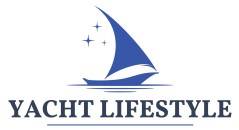
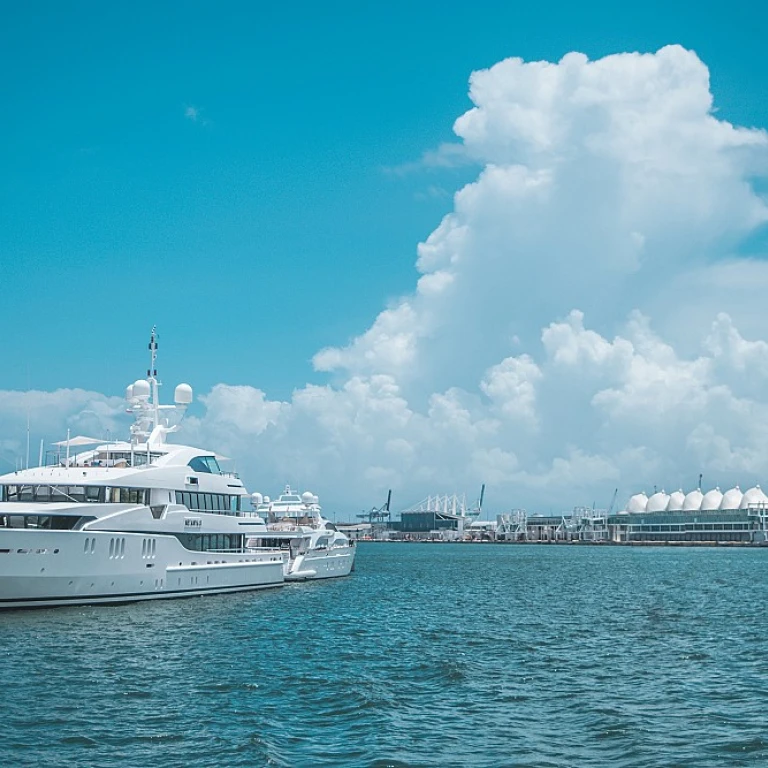
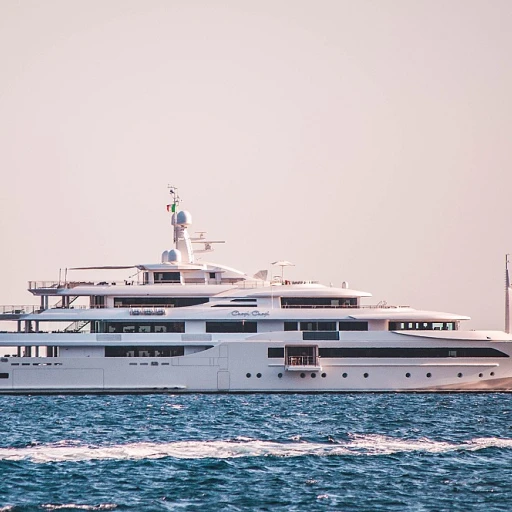
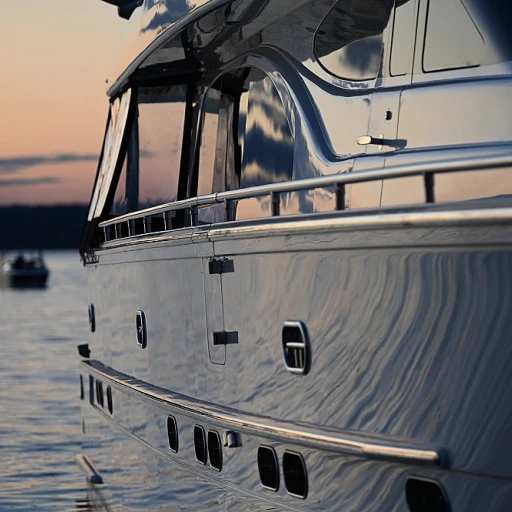
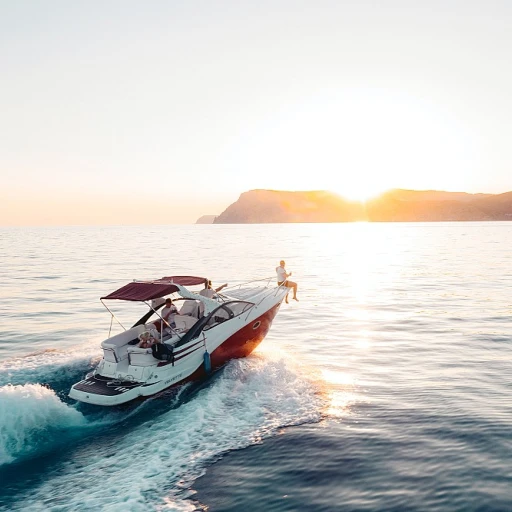
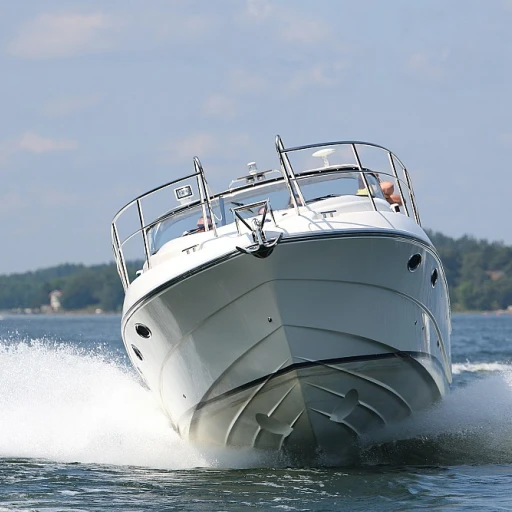
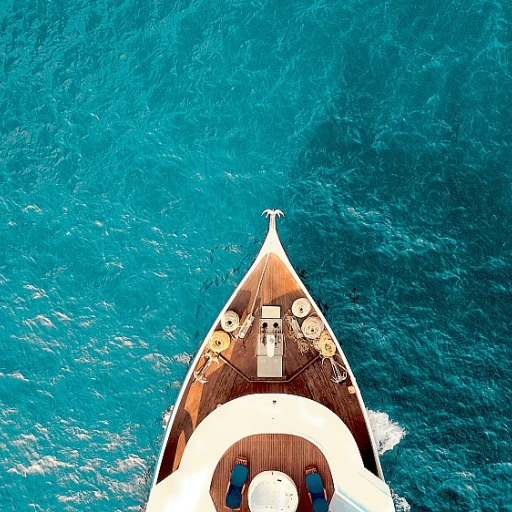
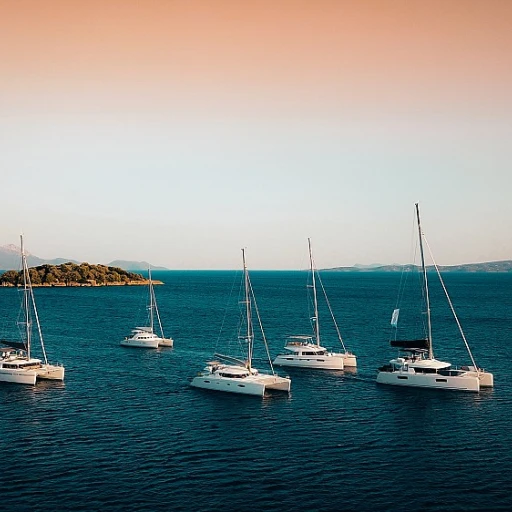
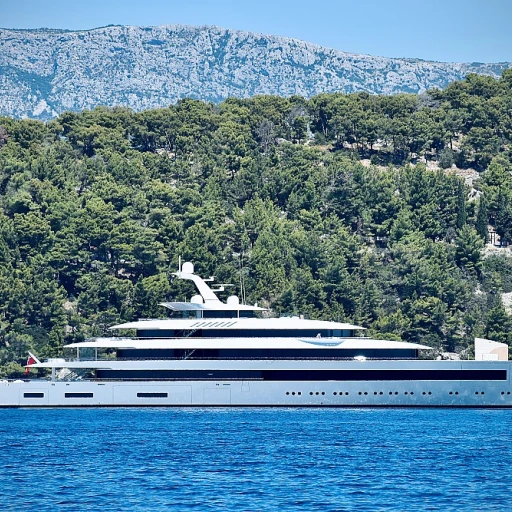
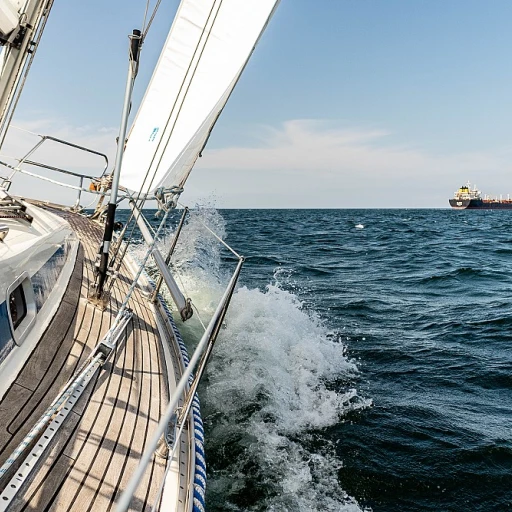

-large-teaser.webp)
